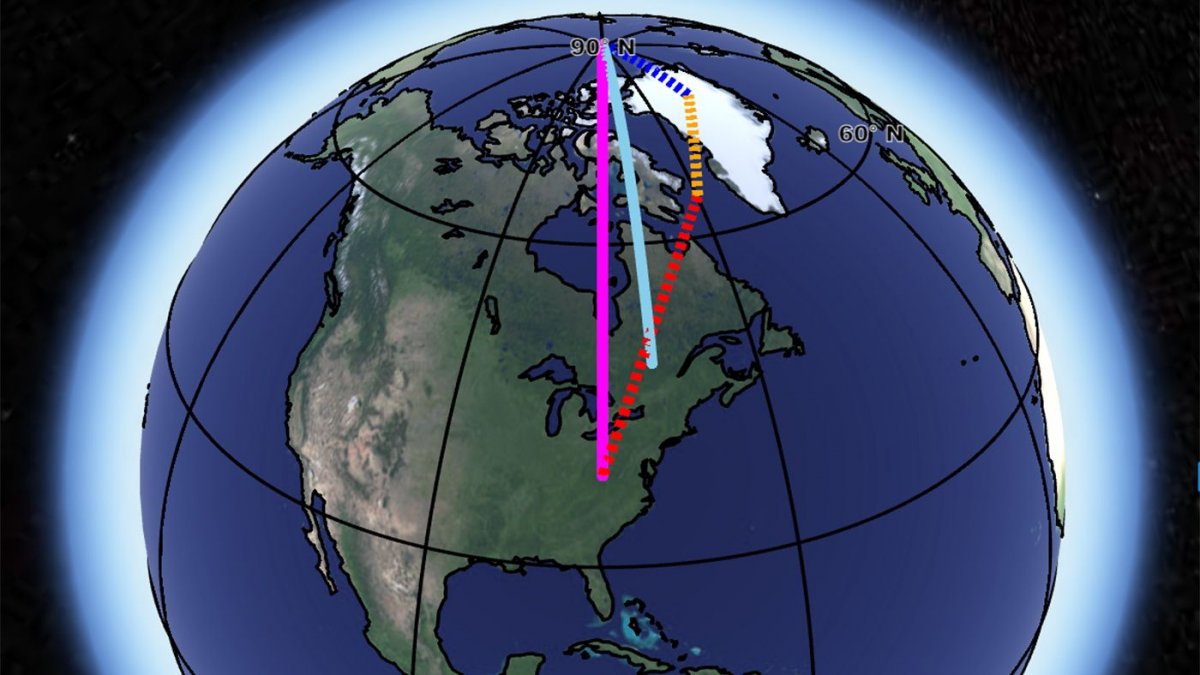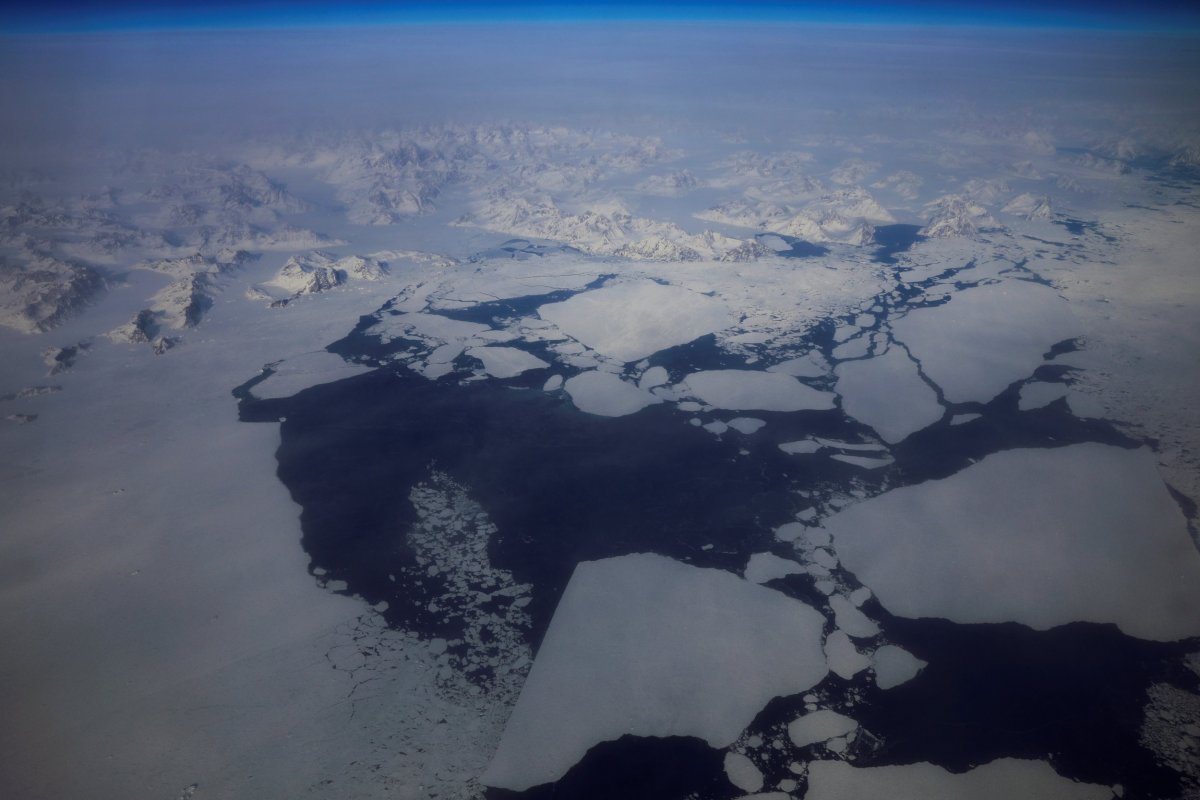Earth is wobbling on its axis as a result of man-made climate change, a NASA-funded study has found. Over the last 100 years, the planet's rotation on its spin axis has drifted over 11 yards, and this shift, researchers have discovered, is the result of mantle convection, glacial rebound and mass loss in Greenland—the latter two of can be directly related to human activities.
The study, published in Earth and Planetary Science Letters, is the first to use observational and model-based data to find out what is happening to Earth's movements.
We know that Earth is not a perfect sphere and when it rotates on its spin axis, it wobbles and drifts. This is normally referred to as the "polar motion." Scientists used to think that glacial rebound was the only process that impacted on polar motion.
Glacial rebound refers to when heavy glaciers that once compressed Earth's surface start to melt. At the peak of the last glacial maximum—the last time the ice sheets were at their greatest extent, around 26,500 years ago—ice covered most of North America, Europe and Asia.

When the ice melts, the ground beneath rises back up into its original position, creating a slight shift in polar motion. However, previous research indicated glacial rebound was only responsible for around a third of the drifts and wobbles recorded over the 20th century—so what else was could be driving the changes?
"The traditional explanation is that one process, glacial rebound, is responsible for this motion of Earth's spin axis. But recently, many researchers have speculated that other processes could have potentially large effects on it as well," said first author Surendra Adhikari, from NASA's Jet Propulsion Laboratory (JPL).
The team assembled models for a variety of different processes that could be involved. Generally, anything that changes the distribution of mass around the planet will affect Earth's rotation.
"We identified not one but three sets of processes that are crucial," Surendra said, "and melting of the global cryosphere (especially Greenland) over the course of the 20th century is one of them."

Findings showed that the loss of Greenland ice was a major contributor. In total, about 7,500 gigatons melted into the ocean between 1900 and 2000. As a result, Greenland ice melt was identified as a huge contributor to the changes to Earth's spin axis. Its global position also made it particularly important to the transfer of mass around the world.
"There is a geometrical effect that if you have a mass that is 45 degrees from the North Pole—which Greenland is—or from the South Pole (like Patagonian glaciers,) it will have a bigger impact on shifting Earth's spin axis than a mass that is right near the Pole," said coauthor Eric Ivins, also of JPL.
Greenland's ice is melting because global temperatures are rising as the result of anthropogenic greenhouse gas emissions. So climate change, at least in part, causing Earth to wobble.
The third cause is mantle convection. This relates to the movement of tectonic plates—the circulation of material in the mantle as a result of heat from Earth's core. This is a natural process not related to human activities.
However, understanding the processes driving polar motion that we do have some control over is important for the future. The authors conclude: "For the first time, a suite of environmental (e.g., cryospheric, hydrologic, oceanic) and solid Earth geophysical processes are all brought together in an effort to explain secular polar motion (SPM). These processes operate on a wide range of timescales, but each transports mass and perturbs the Earth's inertia tensor in an entirely quantifiable way.
"It is an open question as to how future modeling will progress to achieve a more robust reconciliation...we speculate that the path to a less uncertain reconciliation of SPM should involve simultaneous inversions of mantle convection and glacial isostatic adjustment, with the two solid Earth viscous components of internal mass transport treated in a rigorously consistent manner."
Uncommon Knowledge
Newsweek is committed to challenging conventional wisdom and finding connections in the search for common ground.
Newsweek is committed to challenging conventional wisdom and finding connections in the search for common ground.
About the writer
Hannah Osborne is Nesweek's Science Editor, based in London, UK. Hannah joined Newsweek in 2017 from IBTimes UK. She is ... Read more
To read how Newsweek uses AI as a newsroom tool, Click here.








